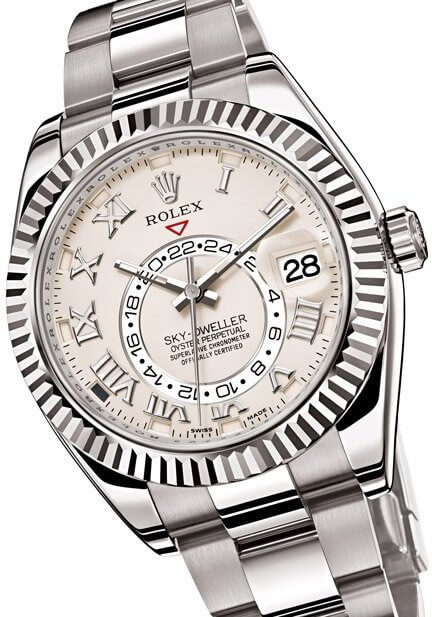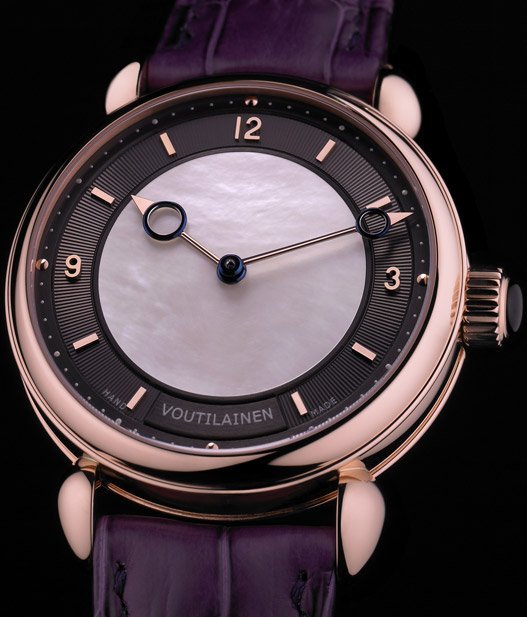“Which of the new models really stand out?” “What’s caught your eye so far?” Interview any representative of a brand exhibiting at Baselworld, one of the biggest dates in the watchmaking calendar, this year held March 9th to 15th, and inevitably these are the first words you will hear. Understandably so, considering that the busy professional, caught up in the whirlwind of an event that drew 104,300 visitors (+1%) and 1,815 exhibitors (-4%), rarely has time to browse the stands, and so instead plies visitors who have trolled the aisles for information on the year’s novelties.
Holding down prices
The difficulty lies in how to answer this perfectly natural question. Increasingly, companies propose the entire spectrum of products from a classic timepiece to grandes complications, through sport watches, ladies’ models and vintage styles, making it harder to pinpoint any real trend. Conveying such profusion in a few words is a task akin to condensing an encyclopaedia into a 140-character tweet.
There are, however, signs as to which way the wind is blowing, beginning with prices. Many companies, such as Zenith which intends offering the best price/quality ratio in the EUR 3,000 to EUR 8,000 (USD 3,900 to 10,500 / CHF 3,600 to 9,600) range, aim to win over customers with “affordable” entry-level models, and this despite the strong Swiss franc and rising commodities prices. The uncertain economic climate is a factor no one can disregard, particularly as it is expected to lead to lower growth in watch exports for 2012. Industry figures confirm that prices are shrinking: the average cost of a mechanical watch has dipped from an all-time high of CHF 2,612 (USD 2,848 / EUR 2,171) in 2008 to CHF 2,146 (USD 2,340 / EUR 1,784) last year, an almost 18% drop. Already back in January, the Salon International de la Haute Horlogerie sent out a clear signal that watchmakers are playing it low-key. Even with exports climbing to a record CHF 19.3 billion (USD 21.05 bilion / EUR 16.04 bilion) (+19.2%) in 2011, watchmakers are now more inclined to use a rosy period to invest in production resources rather than to open the creative floodgates.
Creative thinking
The one place creativity is certainly out in force is with the independent watchmakers. An innovative tourbillon from Kari Voutilainen, who also joined forces with Andreas Strehler to produce Chapter Three for Maître du Temps; spheres moving mysteriously (in fact pulled by magnetic fields) inside tubes to display hours and minutes for Christophe Claret and his Xtrem-1; watchmaking meets fluid mechanics in the H1 by HYT; the Renaissance open-dial tourbillon minute repeater from Peter Speake-Marin; an astronomical complication that determines longitude by Heritage Watch Manufactory.
Such a wealth of creativity should not divert from innovations by the likes of Hublot, whose Antikythera watch is based on the extraordinary astronomical calculator from the second century B.C., or Harry Winston whose Opus is always a major attraction. In the Opus 12, twelve pairs of spinning hands stretching from the perimeter to the centre of the dial indicate time. Harry Winston is also behind the aesthetically and technically masterful Histoire de Tourbillon 3. Equally noteworthy are Blancpain whose Traditional Chinese Calendar also incorporates a Gregorian calendar, and Rolex which presented the Oyster Perpetual Sky-Dweller instantaneous annual calendar GMT.

High frequencies and ladies' watches
Turning to technology, high frequency mechanical movements remain high on watchmakers’ agenda. First TAG Heuer whose Mikrogirder concept watch, unveiled earlier in the year, beats at 1,000 Hz (7.2 million vibrations/hour) and is accurate to 1/2,000th of a second, closely pursued by Montblanc with its TimeWriter II Chronographe Bi-Fréquence 1.000, a movement whose balance beats at 50 Hz yet records elapsed times of a thousandth of a second, corresponding to 500 Hz. Now Chopard enters the fray: its L.U.C 8HF beats at 57,600 vib/h (8 Hz) and is the first high-frequency movement to obtain COSC certification.
Swelling the ranks of new materials this year are Hublot’s Magic Gold, a scratchproof composite of gold and ceramic, and Ceragold from Omega which inlays gold into a ceramic base. As for women’s watches, connaisseuses can satisfy their desire for mechanical timepieces at Patek Philippe, which presents its Ladies First perpetual calendar (ref. 7140), or with one of the new Link Lady watches from TAG Heuer, or perhaps Corum’s Admiral’s Cup Legend 38 Mystery Moon. Not to mention the Linea range from Baume & Mercier, Chanel’s Première Flying Tourbillon, and Hermès’ Arceau Attelage Céleste. “Which of the new models really stand out?” No answer can hope to do justice to the products on show, which hint at greater circumspection from an industry that is still very much in command.





























